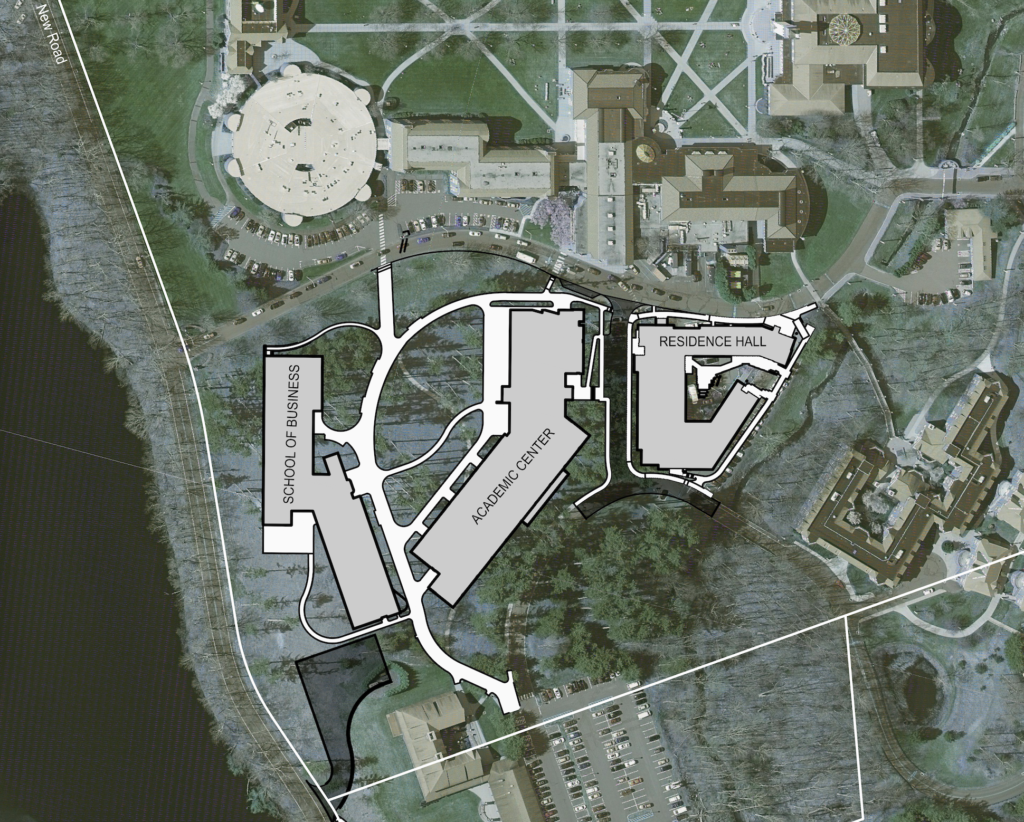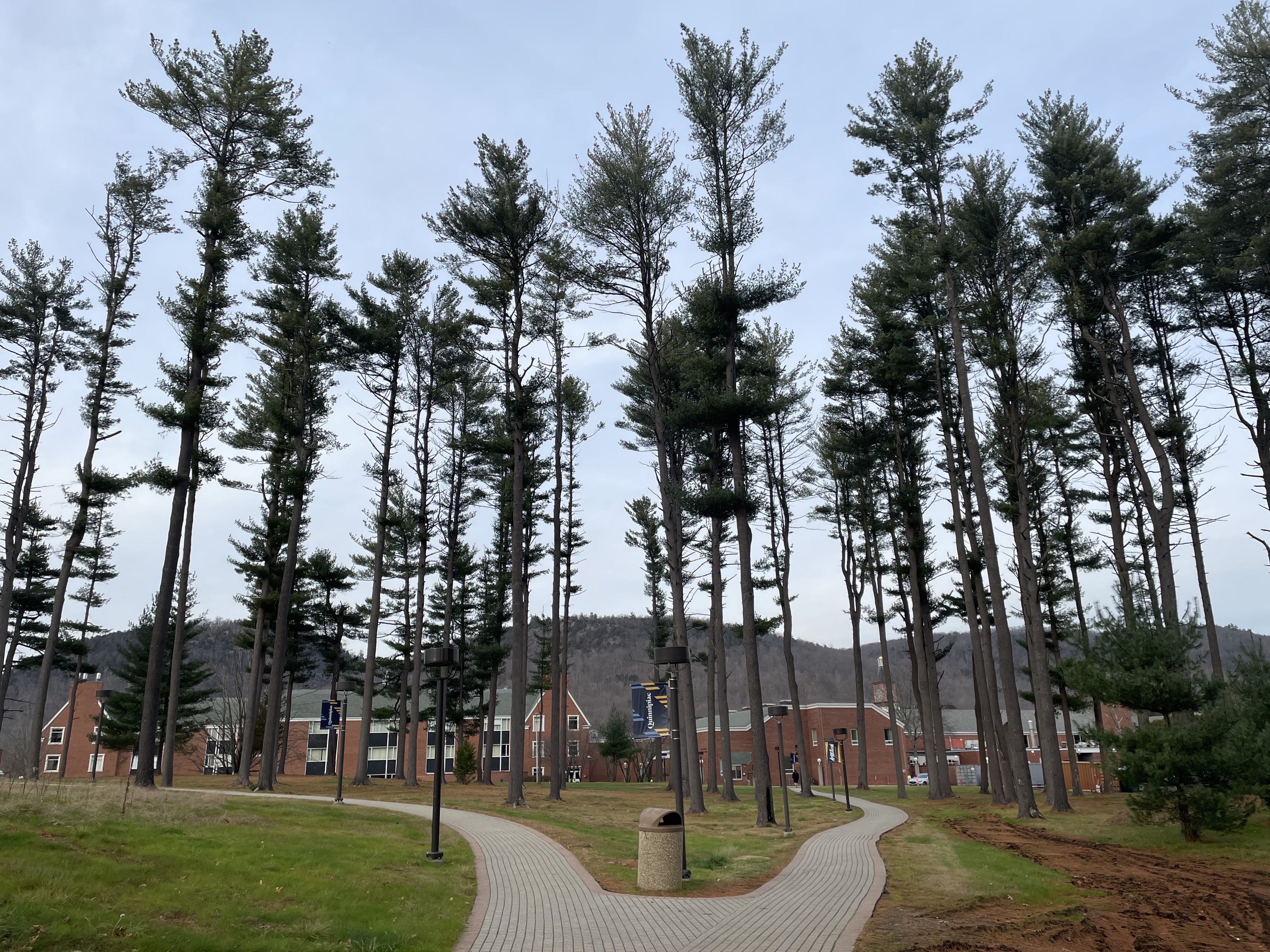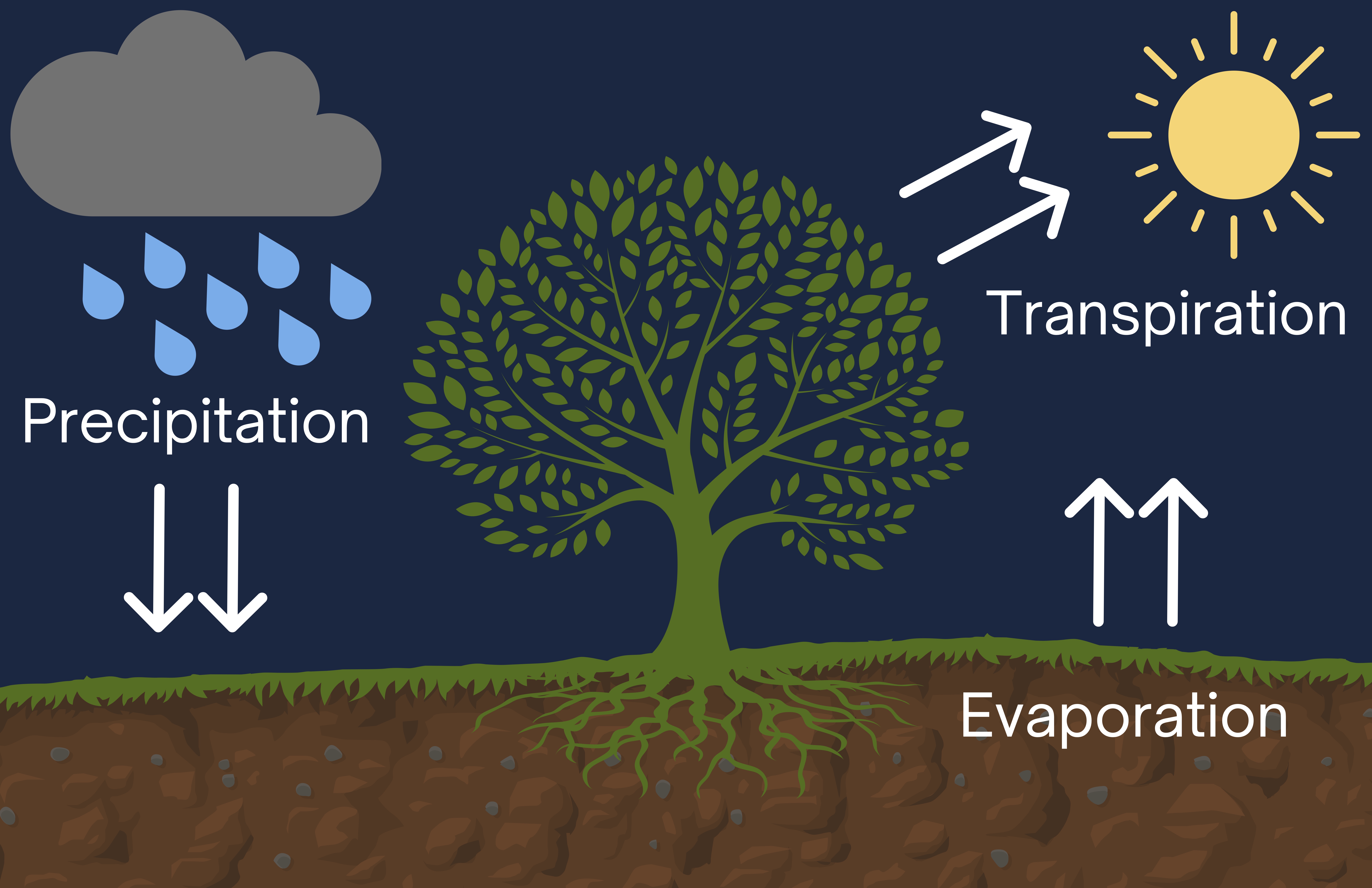Nature nestles Quinnipiac University’s Mount Carmel campus, with Sleeping Giant State Park hovering over the north side of its quadrangle. On the south end of the suburban campus, a forest serves as a tranquil passageway between the student center and a group of academic buildings.
The forest, known as Pine Grove, has occupied five acres of the campus since the university purchased the land in September 1995, town records show. But now, as Quinnipiac plans to tear down the Pine Grove as part of the South Quad campus expansion project, community members are questioning the project’s environmental risks.
Of the initiatives listed in Quinnipiac’s 10-year master facilities plan — which details new building projects across the university’s three campuses — the South Quad development is the largest.
Announced in February 2022, just a year after the 10-year plan was announced, the $244 million South Quad project consists of three new buildings: a business school, a residential hall and a classroom building for the Mount Carmel campus. The project will be built in time for the 2024-25 academic year.

University officials touted the late additions to the 10-year plan as “necessary advances in academic, research and student learning-living experiences at Quinnipiac for years to come.” But the decimation of the Pine Grove forest runs counter to the university’s sustainability goals, which include developing “practices that promote a healthy regional ecosystem,” according to its 2022 sustainability report.
Community members express concern
“The word sustainability promotes concepts of ‘long lasting’ and ‘self-sufficiency’ – reusing what you already have to make something new. This is not being reflected in these renovation plans,” the executive board of Quinnipiac’s Students for Environmental Action wrote in a statement posted to Instagram in February, shortly after the project was announced.
SEA president Isabelle Strandson wrote in an email statement to HQNN in October that the group hopes the university will make “a conscious effort to protect what will be left” of Pine Grove.

Some local residents have also expressed concern about the project’s impact on the environment.
Craig Repasz, who has lived in Hamden since 2002, wants Quinnipiac to become a leader in protecting the area’s wildlife.
“Quinnipiac has, obviously, a very beautiful campus … it’s a beautiful natural setting,” said Repasz, who is the co-chair of Lights Out Connecticut, a committee within the Connecticut Ornithological Association that aims to raise awareness about migratory bird protection. “However, having these buildings go in will detract from the welfare of the wildlife.”
Storm decimation
Sean Duffy, a professor of political science at Quinnipiac who teaches environmental policy, said because the Pine Grove is a monoculture, or a field that consists of only one crop that was grown at one time, it has been impacted as it ages, especially by storms.
The most significant storm the Pine Grove has weathered was in May 2018, when a tornado ripped through the Mount Carmel campus and knocked down about 450 trees from the forest.
“(The 2018 tornado) kind of wiped two-thirds of the trees out in one 15-minute period,” Duffy said. “And the fewer trees that are there to support the rest, to buffer the wind and everything else, the more in jeopardy each remaining tree is. So every storm is going to increase the potential for any one of those other trees to come down.”
Duffy said the potential for trees to fall in future storms poses a danger to the surrounding area.
“You look around and you say, most of the trees are gone now anyway. So it’s like it’s not really doing what it used to do in terms of creating a peaceful environment and everything else,” Duffy said.


Sal Filardi, Quinnipiac’s vice president for facilities and capital planning, told HQNN that the majority of the Pine Grove has already been eradicated by storms, like the 2018 tornado, in recent years. He said the pine trees are more susceptible to breaking due to wind.
“When there’s a lot of (trees) they kind of balance each other off, they’re harder to push down,” Filardi said. “But as they thin out, they get even more susceptible to wind damage, and that’s what we’re seeing.”
The university closes the Pine Grove to pedestrian traffic on especially windy days due to the potential of falling branches, Filardi said.
In a May 2022 Hamden Inlands Wetlands Commission meeting, Radhika Mahan, a landscape architect working on the South Quad project, said the construction would require removing 257 trees from the Pine Grove forest – including 114 mature trees.
Mature trees, which are trees that have reached their full height, are “more vulnerable to disease, wind and other causes of death,” according to a study about the management of mature trees in the Journal of Arboriculture.
Effects on the local environment
Mike Montgomery, a retired research scientist who previously worked for the USDA Forest Service and currently serves as a member of Hamden’s Tree Commission, said the removal of the pine trees could have a considerable effect on the local environment.
“You have a stand of trees that are now shading the ground and keeping the ground basically at an even temperature,” Montgomery said.
In addition, the potential negative effects of the forest’s removal involve water runoff.
“The trees are drawing water that runs off into the ground,” Montgomery said. “And that water is going up in the atmosphere, rather than running off as a stream down into the Mill River that’s near there.”
The loss of trees in the area limits evapotranspiration, which is the process by which water moves from the land surface to the atmosphere. The Purdue University Landscape Report estimates the water movement through a pine tree at 6 feet per hour, depending on the source of the movement.
Evapotranspiration is responsible for 15% of the atmosphere’s water vapor, the North Carolina Climate Office projects. Water vapor circulation allows for the formation of clouds and falling of precipitation.

John Greenleaf, associate professor of engineering and chair of the engineering department at Quinnipiac, said that without the pine trees on campus, the amount of water runoff in the area will be dependent on both the size of the rainstorm and the surface that the rain is falling on. If water runoff is not properly regulated, it could lead to an influx in flooding.
“Are these impervious surfaces like parking lots, or rooftops, things like that, or are they pervious surfaces, things like fields or lawns or forests?” Greenleaf said. “If you have enough impervious surfaces, like parking lots and things like that, you’re going to start to have a lot of runoff from that.”
Greenleaf said if the water runoff in the area is managed properly with stormwater basins, the water can be infiltrated back into the ground.
“It kind of depends on what you’re replacing (the trees) with, and if you’re replacing it with something impermeable, what are you doing with that water that’s then collected on that surface,” Greenleaf said.
Howard Pfrommer, a civil engineer that is working on the South Quad project, said in the May IWC meeting that the soil around the site of the Pine Grove is permeable.
The permeability of the soil led officials to plan for the implementation of a stormwater infiltration system, which is when water runoff flows into and through the subsurface soil.
Pfrommer said the primary infiltration system, which will take in the most water from the area, is planned to go in the area between the School of Business and the academic building, which is a portion of the site where the Pine Grove currently sits.
Despite the potential increase in water runoff without the trees, Greenleaf said the removal of the Pine Grove creates more of an aesthetic concern rather than an environmental one, a sentiment Filardi shared.
“Trees are falling down now individually, which… never happened five years ago, and it’s not really the picturesque grove that it used to be,” Filardi said.
Replanting plans
Despite the eradication of Pine Grove, Filardi said the university is planning to replant trees throughout the campus during the South Quad construction, particularly along the stretch of New Road across from Clark’s Pond.
“The plan is to make sure that for every tree that is removed, a tree is replaced,” Filardi said. “From a count standpoint, we’re not losing any trees on campus.”
Although the replanting plan will create new growth on campus as opposed to maintaining matured forestry, Filardi said the new plants will be better adapted to the area than the existing pines.
“Obviously, we’re not replacing a hundred foot, 50-year old tree with a 100-foot, 50-year old tree,” Filardi said. “They’re smaller trees, but the design is more attuned to the area, and more sustainable than the pine trees have proven to be.”
“The plan is to make sure that for every tree that is removed, a tree is replaced.”
-Sal Filardi, vice president of facilities and capital planning
As for the growth that will be removed, Filardi said the university plans to harvest the trees that are taken down to distribute to timber mills.
“As part of the tree removal of the pine trees we are making sure that they’re not just being wasted,” Filardi said. “They’re being tracked, and we’re sending the logs to a timber mill to be kind of repurposed.”
Montgomery said he is glad Quinnipiac is planning to harvest the trees despite the removal being “a negative effect on the environment overall.”
“We’re basically industrializing and urbanizing the part that was just part of nature. So it’s not going to improve things,” Montgomery said.
